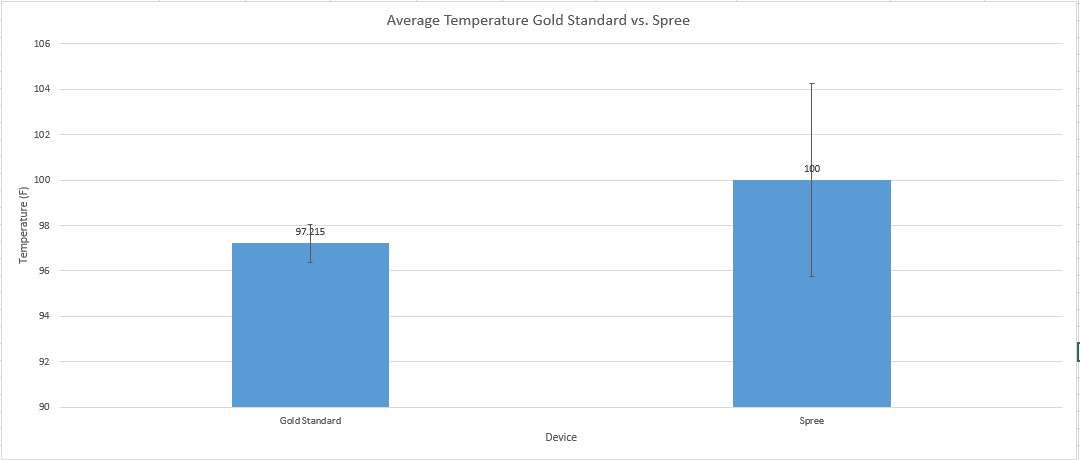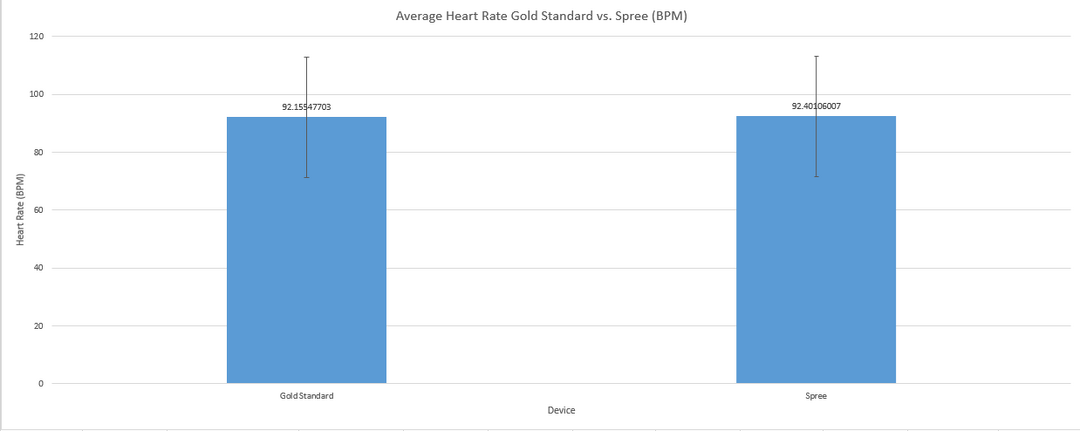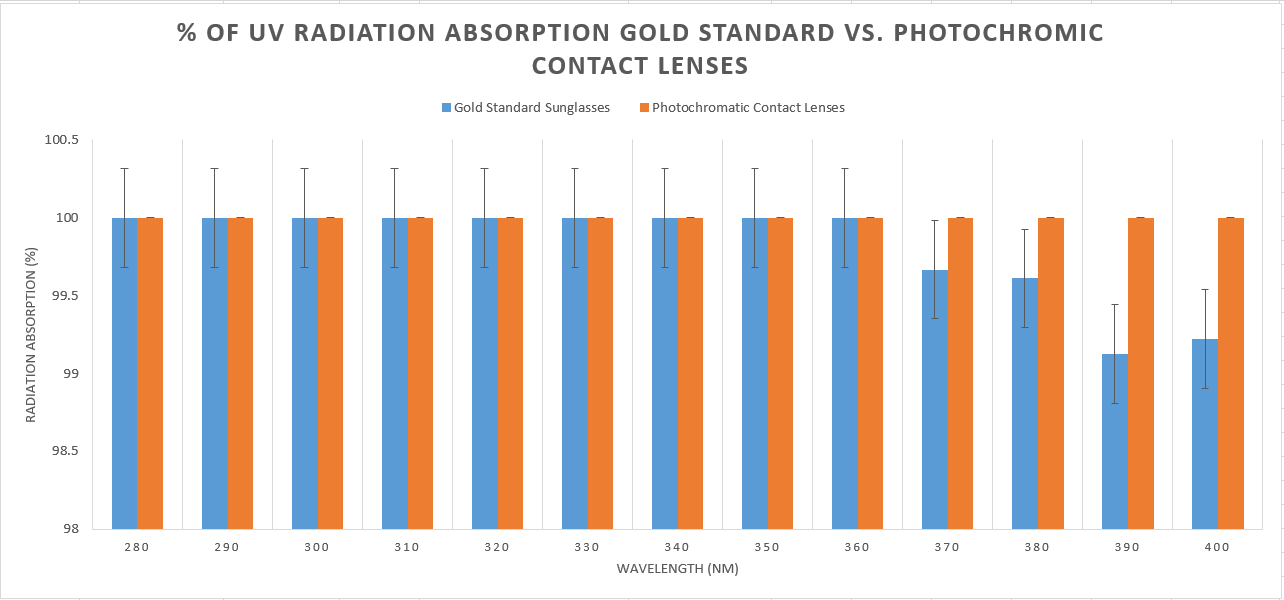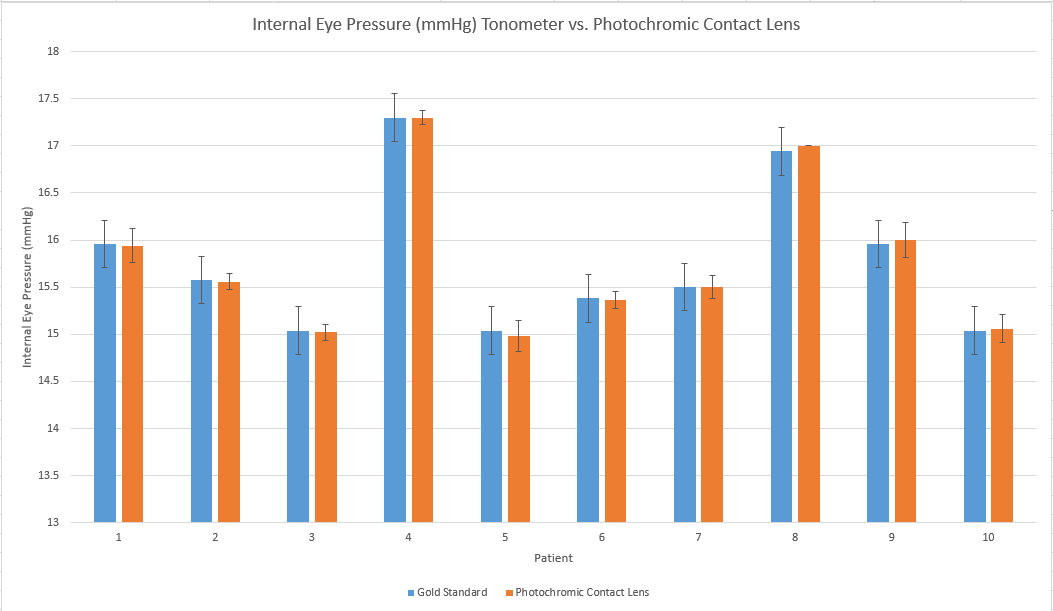BME100 f2014:Group34 L3
| Home People Lab Write-Up 1 | Lab Write-Up 2 | Lab Write-Up 3 Lab Write-Up 4 | Lab Write-Up 5 | Lab Write-Up 6 Course Logistics For Instructors Photos Wiki Editing Help | |||||||
|
OUR TEAM
LAB 3A WRITE-UPDescriptive StatisticsThe final averages of the Spree and the gold standard were calculated from all available and applicable data from the 34 groups. Averaged data includes the 5 pre-walk readings, the 12 walking or exercise readings, and the 5 cool down readings. The tables below show the averages of the temperature and heart rate from the spree and the gold standard in degrees Fahrenheit and beats per minute.
Results
AnalysisThe pearson value close to 0 indicates there is no correlation in the data set. The Pearson value close to +1 indicates there is a positive correlation in the data set.
Summary/DiscussionIn this lab we compared the accuracy of the Spree, a bluetooth enabled device that measures body temperature and heart rate, to that of an oral thermometer and a blood pressure cuff. We took multiple measurements of our test subject's heart rate and temperature using both the Spree and the Gold Standard devices. We then ran a T-test comparing the data from all 34 groups. We found there to be a statistical difference in the temperature data measured by the Spree and the thermometer, as the p-value was less than 0.05. When we ran the T-test on the heart rate data we found there to be a very large statistical difference, as the p-value was much greater than 0.05. This statistical difference is to be expected as the spree only measures 4 outputs which then have to be converted to degrees Fahrenheit. In addition, the Spree measures external body temperature which can differ greatly from the internal temperature measured by the oral thermometer. The lack of statistical difference in heart rate measurements indicates the Spree is a viable product as it comes very close to the measurements of heart rate my a blood pressure monitor. A design flaw in the Spree device was the Bluetooth connectivity. Having multiple sprees in the same area interfered with the connection between a user's spreed band and phone. This flaw is due to technological limitations and cannot be solved but, it can be avoided by including an advisory note. The instructions should tell the user to be a certain distance away from other spree users when initiating the device pairing. Another design flaw in the Spree is that it only measures the user's external temperature, which is liable to change due to environmental factors, such as the weather. It would be ideal for the Spree to measure the internal temperature of the user. Another recommendation for the Spree is to make it more aesthetically pleasing to the individual user. It would be ideal if each user had the option of customizing his/her Spree band to their preference because this would improve the user's tendency of wearing it in public, thus increasing the costumer's satisfaction with the overall product.
LAB 3B WRITE-UPTarget Population and NeedThe target population for our product are users of sunglasses. The need for our product comes from the hassle of keeping track of a physical pair of sunglasses, as well as maintaining them. There is also a need for a guaranteed 100% protection from ultraviolet radiation. Our product also allows for a convenient means of measuring eye pressure and detecting cases of glaucoma early on, allowing an increased chance at saving the patient's vision.
Device DesignOur product will be a thin lens made of silicone hydrogel that will be placed over the wearer's corneas. The surface of the lens will be laced with a network of nano-sized tubes filled with UV-sensitive dye. As the wearer moves into an area with increased UV radiation, the lenses will darken, blocking 100% of all UV radiation. The lens will also include a nano-sized tonometer to measure the pressure of the eye. The sensor will periodically apply a small force to flatten a constant area of the eye for a fraction of a second. By doing this, the pressure in the eye can be measured without the wearer feeling any discomfort or pain. As a result, cases of glaucoma, and other eye pressure-related diseases, can be discovered and treated early.
Inferential Statistics
Graph
|
|||||||










